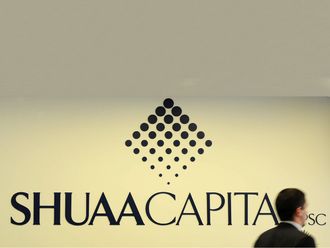Equity investors in India are expected to tread gingerly in the coming week as they await the central bank to lower borrowing costs to resuscitate the economy, which has been rocked by acute cash shortage with consumers after a shock government move more than three weeks ago to abruptly scrap 86 per cent of the currency in circulation.
The Reserve Bank of India (RBI) is scheduled to review policy on Wednesday and the overwhelming opinion among economists and brokerages is for a 25 basis point reduction in the repo rate, though some are betting the central bank would likely deliver a 50 points cut.
“In an uncertain economic environment since the demonetisation exercise, the December monetary policy has to focus on a prudent risk management approach rather than a simple growth-inflation trade-off,” Citigroup economists Samiran Chakraborty and Anurag Jha wrote in a report. The bank expects the RBI to lower the repo rate to 6 per cent from 6.25 per cent currently.
Keki Mistry, chief executive of Housing Development Finance Corp, the nation’s biggest mortgage firm, believes the central bank would be more forceful.
“I would have said 25 basis points cut is normally what is warranted. However, to give a further impetus to growth and the economy and taking into account relatively low inflation that we are seeing, it could be possible that RBI could look at a 50 basis points lowering,” he told a media channel.
Irony of cash
Commercial banks are awash with deposits after Prime Minister Narendra Modi announced in a televised address on November 8 that Rs. 1,000 and Rs. 500 bank notes would cease to be legal tender from that midnight.
Aimed at flushing out unaccounted cash hoards and to clean up counterfeit currency, the decision however has caused collateral damage to millions of ordinary people and dented demand for consumer goods — from soaps and oils to cars and mobile phones. Doubtlessly, economic growth in the December and March quarters is set to take a beating.
Banks across India received Rs. 8.45 trillion in deposits of old notes in about three weeks as people rushed to exchange the banned currency.
But there isn’t enough cash to go around.
In what has become a logistical nightmare, and exposed how ill-prepared the authorities were, there aren’t enough new notes to replace the debunked paper. With no money in cash machines, this has led to long queues at bank counters and severe restrictions on withdrawals.
According to one estimate, 98 per cent of all transactions in India were done in cash. The government wants to create a cashless society, where all deals are done through online cash payments or e-wallets. The objective is laudable but impossible in practice, particularly in India where a majority of people are poor and live in rural regions.
“No economy in the world is a cashless economy,” Adi Godrej, chairman of consumer goods conglomerate Godrej, told the Indian Express newspaper. “So to try and get into a cashless economy situation especially in rural India … to my mind, will be very difficult.”
Troubled times
The demonetisation drive has doused the fizz of an economic recovery. Factory activity in November lost pace sharply as consumer spending shrunk, hitting new orders and production.
The Nikkei/Markit Manufacturing Purchasing Managers’ Index dropped to 52.3 in November from 54.4, its biggest month-on-month fall since March 2013.
“PMI data for November showed that the sudden withdrawal of high-value banknotes in India caused problems for manufacturers, as cash shortages hampered growth of new work, buying activity and production,” said Pollyanna De Lima, economist at survey compiler IHS Markit.
The new orders sub index that measures both foreign and domestic demand tumbled to 53.3 from 57.7 in October, the worst monthly drop in over 4-1/2 years.
India’s $2 trillion economy expanded 7.3 per cent in the September quarter, below economists’ expectations of 7.5 per cent, but more than the 7.1 per cent rise in April-June. However, the world-beating growth rates are vulnerable to the cash crunch, and the pace of expansion could slow to 6.5 per cent — if not lower — in the March quarter.
Fitch Ratings lowered its forecast for India’s economic growth to 6.9 per cent for 2016-17 from 7.4 per cent it predicted earlier, citing “temporary disruptions”.
“Economic activity will be hit in the fourth quarter of 2016 by the cash crunch created by withdrawal and replacement of bank notes that account for 86 per cent of the value of currency in circulation,” it said.
“It does create a disruption,” Finance Minister Arun Jaitley told a gathering on Friday, referring to the demonetisation and the cash crunch. “But I don’t see the disruption lasting for very long. You may see some impact for a quarter or so.”
Not many are buying that, however. P. Chidambaram, an opposition lawmaker and a former finance minister, said the pain would be longer and the authorities would take at least until next June to pump sufficient new notes into the system.
November domestic sales at Tata Motors, which makes cars, utility vehicles, trucks and buses, fell 28.4 per cent from October, while sport utility vehicles and tractor leader Mahindra & Mahindra saw sales tumble 38.8 per cent. Motorcycle maker TVS Motor Co said its sales dropped 27.9 per cent.
“Of respite to firms, cost inflationary pressures softened, which in turn encouraged the vast majority of businesses to keep their selling prices unchanged. If this trend is sustained we will likely see further cuts to the (RBI’s) benchmark rate,” De Lima said.
Both the top-30 Sensex and wider 50-share Nifty index dropped 0.3 per cent over the week, to 26,230.66 and 8,086.80 respectively.
The writer is a journalist based in India.












